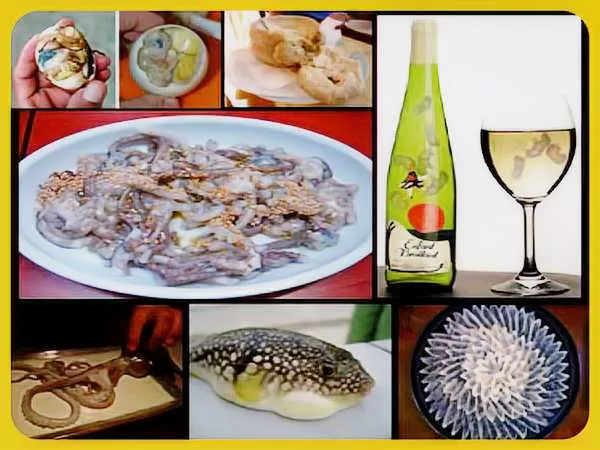Our world boasts a vibrant tapestry of cultures, each with its own unique traditions and, of course, cuisine. While some dishes tantalize the taste buds with familiar flavors, others venture into territory that might leave some diners bewildered. Today, we embark on a culinary adventure, exploring five bizarre and fascinating foods from around the globe.
1. Fugu (Japan): A Dance with Death
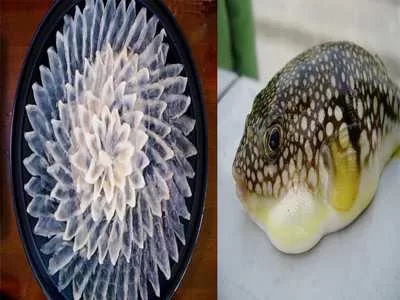
In Japan, the thrill of the culinary experience reaches new heights with Fugu, a dish featuring the potentially lethal Pufferfish. This fish contains tetrodotoxin, a neurotoxin so potent that it can cause paralysis and even death if not prepared with extreme precision. Only specially trained and licensed chefs can legally prepare Fugu, meticulously slicing the fish paper-thin to avoid diners encountering the toxic parts. While the risk might seem foolhardy, for some, the delicate flavor and unique texture of Fugu are worth the gamble. However, this potentially deadly delicacy comes with a hefty price tag, ranging from $20 to $200 per serving!
2. Sannakji (Korea): A Squirming Surprise
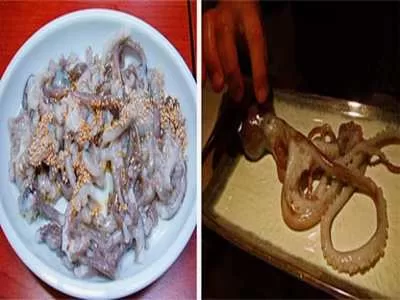
For those seeking a truly interactive dining experience, Sannakji from Korea might be the answer. This dish features live octopus, cut into small, wriggling pieces, and served immediately. The tentacles retain their reflexes, suctioning themselves to plates and diners alike. Special care is necessary while consuming Sannakji, as the active suction cups can pose a choking hazard. While the thought of consuming a live animal might be unsettling, in Korea, Sannakji is a popular delicacy, enjoyed with a sesame oil and chili paste dipping sauce.
3. Casu Marzu (Italy): Cheese with a Side of Live Maggots
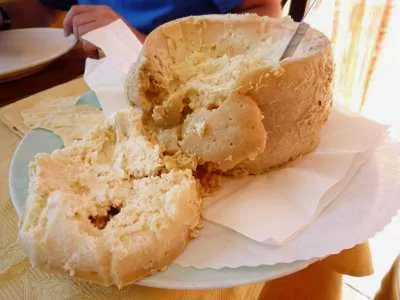
If your idea of cheese involves creamy textures and a pleasant aroma, prepare to be challenged by Casu Marzu from Sardinia, Italy. This cheese takes fermentation to a whole new level, intentionally introducing maggots of the cheese fly into the mixture. The live maggots feed on the cheese fat, creating a soft, decomposed texture. While the prospect of consuming cheese teeming with maggots might seem repulsive, Sardinians relish this pungent and creamy delicacy. However, be warned – ingesting dead maggots can be harmful, so the cheese is typically eaten while the maggots are still alive!
4. Balut (Philippines): A Fully Formed Chick Embryo
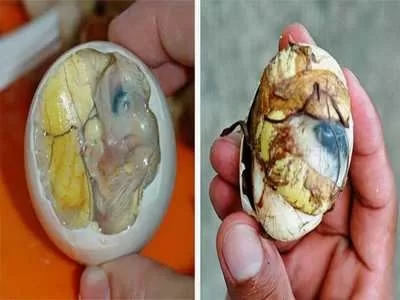
Balut, a street food staple in the Philippines and other Southeast Asian countries, is a dish that pushes the boundaries of what most consider “edible.” This “delicacy” involves a fertilized duck egg, incubated for 14-21 days, then boiled and eaten in its entirety. Diners peel the shell to reveal a partially developed chick embryo, complete with feathers and a beak. The broth is first sipped, followed by the yolk and the embryo itself. The taste and texture of Balut are a complex mix, with some finding it surprisingly palatable, while others find it challenging to overcome the visual aspect.
5. Baby Mice Wine (China): A Traditional Tonic with a Gruesome Gulp
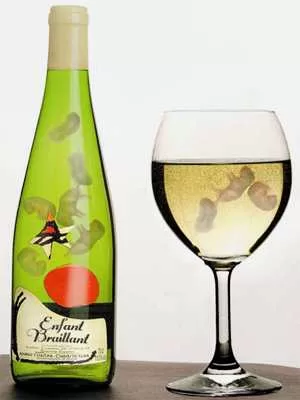
If you thought the previous entries were extreme, Baby Mice Wine from China might take the cake (or rather, the mice). This traditional health tonic involves drowning live baby mice in rice wine. Believed to cure a variety of ailments, from asthma to fatigue, Baby Mice Wine is a stomach-churning concoction. The pungent taste and the unsettling sight of tiny mice floating in the bottle make this a truly bizarre beverage. Needless to say, this practice is met with strong disapproval by animal rights activists, and thankfully, its popularity is declining.
A World of Culinary Delights (and Oddities)
These five examples showcase the remarkable diversity of global cuisine. While some of these dishes might seem strange to Western palates, they represent cherished traditions and culinary experiences in their respective cultures. So, the next time you’re feeling adventurous, consider stepping outside your comfort zone and exploring the fascinating world of international food – just maybe leave the baby mice wine on the shelf.

